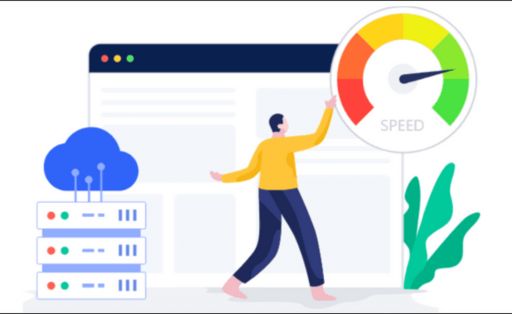- In order to provide an excellent user experience, optimize your website’s speed and performance.
- Factors affecting website speed and performance include web hosting, image optimization, and code modification.
- Caching and CDN can improve loading times while optimizing Core Web Vitals, enhancing user experience and search engine rankings.
- Regularly check your website’s speed using tools like Google’s PageSpeed Insights and address any issues promptly.
- Stay up-to-date with new developments in website speed and performance optimization to stay ahead of the competition.
In today’s fast-paced world, customers expect quick and seamless experiences on the web. Optimizing your website’s speed and performance is crucial to ensure your website meets these expectations and drives traffic.
Website speed and performance refer to the amount of time it takes for a website to load and respond to user requests. Speed and performance are essential for an excellent user experience since every additional second of delay can lead to traffic, conversions, and revenue losses.
In addition, website speed and performance also play a significant role in search engine optimization (SEO). Google, for example, considers website speed as one of the ranking factors, which means that slow-loading websites may receive lower search engine rankings and, in turn, fewer clicks and visits.
This article will explore how you can optimize your website’s speed and performance to ensure a better user experience. This will also discuss maximizing website speed and performance for an optimal user experience.

Contents
Factors that Affect Website Speed and Performance
A fast and reliable website provides a positive user experience and maximizes website traffic. Here are some factors that can affect your website speed and performance:
Web Hosting
Your website’s hosting provider can significantly impact its speed and performance. Choosing a reliable hosting provider with fast servers and optimized settings can help improve your website’s loading times.
You can also consider upgrading to a virtual private server (VPS) or dedicated server, which offers more resources and control over your hosting environment.
Image Optimization
Images play a crucial role in your website’s visual appeal and engagement. However, large files and high-resolution images can slow your website’s loading times.
Optimize your images by compressing them to reduce their file size while maintaining visual quality. Use responsive images that load faster on smaller screens while delivering high-quality images on larger screens.
Minification of Code
Your website’s code can have excess white space, comments, formatting, and other elements that slow loading times. Minifying your code involves removing these unnecessary elements to reduce its file size while keeping its functionality intact. You can use tools like CSSMinifier and JSMin to minify your CSS and javascript code.
Caching
Caching involves temporarily storing your website’s content on a user’s device or in a server’s memory to reduce loading times when the user revisits your website. You can use web caching plugins like W3 Total Cache, WP Super Cache, and WP Rocket to implement caching on your website.
Content Delivery Network (CDN)
A CDN involves using servers in different locations worldwide to store and deliver your website’s content to users from the nearest server location. This reduces the distance and time it takes for your website’s content to travel to the user’s device, improving its loading times.
Core Web Vitals Optimization
Google’s Core Web Vitals refer to website speed metrics determining your website’s user experience and overall performance. These metrics, such as LCP, FID, and CLS, are crucial for core web vitals optimization. Optimizing these metrics will significantly improve your website speed and performance, leading to better user experiences and search engine rankings.
Here are some tips for optimizing core web vitals:
Optimizing the Largest Contentful Paint (LCP):
LCP gauges the loading speed of the largest content element of your website. In order to optimize LCP, consider using optimized images, minimizing server response times, using a CDN, and minimizing third-party scripts.
Optimizing First Input Delay (FID):
FID estimates the user experience during their first interaction with your website, such as clicking a link or button. To optimize FID, minimize JavaScript execution time, reduce server response time, and use browser caching.
Optimizing Cumulative Layout Shift (CLS):
CLS measures the visual stability of your website, ensuring elements don’t shift around unexpectedly. Consider using the appropriate image and ad sizes, reserving ad space, and adding dimensions to media elements to optimize your CLS.
Monitoring and Maintaining Website Speed and Performance
To ensure your website remains fast and reliable, here are some tips to monitor and maintain its speed and performance:
Regularly Check Website Speed and Performance Using Tools
Regularly check your website’s speed and performance using tools like Google’s PageSpeed Insights, GTmetrix, and Pingdom. These tools help identify areas of improvement, allowing you to improve your website’s overall speed and performance.
Address Any Issues That Arise Promptly
If you identify any issues during your website checks, address them immediately. Waiting too long can harm user experience and search engine rankings, leading to lost traffic and revenue.
Stay Up-To-Date With New Developments in Website Speed and Performance Optimization
Stay up-to-date with new developments in website speed and performance optimization to stay ahead of the competition. Following websites like Google Webmasters, Moz, and Search Engine Journal can help keep you informed of new developments in the industry.

Optimizing your website’s speed and performance is crucial for delivering a satisfying user experience and improving your search engine rankings.
By implementing the above measures, like using fast hosting, optimizing your images, minifying your code, implementing caching, and using a CDN, you can significantly improve your website’s loading times, reduce bounce rates, boost conversions, and ultimately grow your business.
Moreover, optimizing website speed and performance is essential for an optimal user experience, better search engine rankings, and driving traffic to your website. Optimizing core web vitals, monitoring and maintaining website performance, and staying up-to-date with new industry developments ensure your website runs at peak performance.
